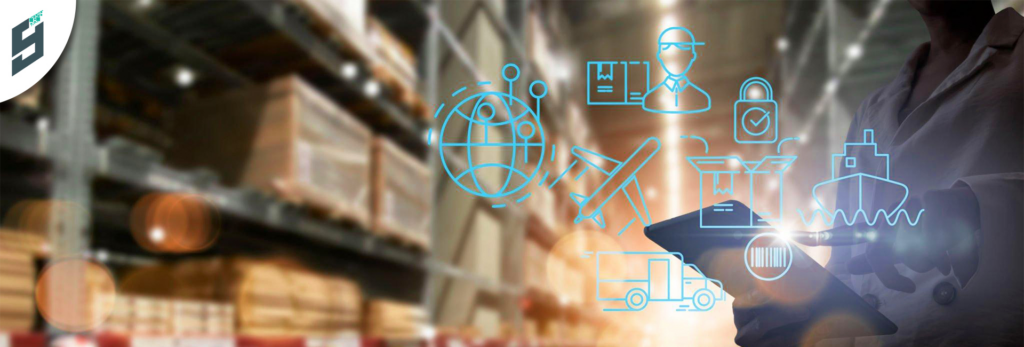
With the rise in e-commerce, shipping, and logistics have become an integral part of our lives. Online shoppers everywhere are familiar with the anticipation of eagerly awaiting their packages. But have you ever wondered about the behind-the-scenes operations involved in making sure your package arrives at your doorstep? One of the innovations that has emerged to streamline the delivery process is package consolidation. In this blog post, we will be exploring the evolution and impact of package consolidation in logistics.
Table of Contents
Overview of Package Consolidation in Logistics
Package consolidation is a significant element in logistics. It involves combining smaller shipments into one larger shipment to optimize transportation efficiency and costs. This process has long been a cornerstone of logistics strategy, but as global trade grows and technology advances, it’s becoming even more critical.
Why the Topic of Package Consolidation is Relevant Today
The importance of package consolidation is magnified in today’s era of globalization and the e-commerce boom. It has the potential to revolutionize supply chain management, reduce costs, and improve sustainability – issues of immense relevance in our contemporary world.
Understanding Package Consolidation
Definition and Basic Concept of Package Consolidation
Package consolidation is a logistics process where multiple smaller packages are combined into one larger package or shipment. This strategy helps in streamlining delivery operations, cutting down on shipping costs, and reducing the environmental footprint.
History and Evolution of Package Consolidation in Logistics
Package consolidation has its roots in the early days of the trade when bulk goods were transported over long distances. It evolved over time, with advancements in transportation and technology. From manually organizing packages on shipping pallets to leveraging sophisticated software for automated consolidation, the journey has been monumental.
The Current State of Package Consolidation
Today, package consolidation is an integral part of sophisticated logistics strategies. With the increasing dominance of e-commerce and just-in-time manufacturing, the demand for efficient and economical shipping methods has skyrocketed, making package consolidation more relevant than ever.
Advantages of Package Consolidation
Cost Effectiveness
Consolidation saves costs in multiple ways: reduced freight charges, minimized handling fees, and fewer customs charges.
Environmental Impact and Sustainability
By reducing the number of individual shipments, package consolidation decreases CO2 emissions, contributing to a more sustainable supply chain.
Improved Security Measures
Consolidating shipments into one package decreases the risk of damage or loss during transportation.
Enhancing Operational Efficiency
It also streamlines logistics processes, reducing handling times and increasing operational efficiency.
The Challenges of Package Consolidation
Coordination and Timing Issues
It requires careful coordination and timing to ensure all the smaller packages are ready for consolidation and shipment.
Regulatory Challenges
Rules and regulations on packaging and shipping can pose significant challenges, particularly for international shipments.
Impact on Delivery Times and Customer Satisfaction
Consolidation might lead to longer delivery times, which could potentially affect customer satisfaction, particularly in the era of fast shipping expectations.
Technology and Package Consolidation
Role of Automation and Robotics
Automation and robotics are increasingly being used for package consolidation, enhancing efficiency, and reducing errors.
Impact of Artificial Intelligence and Machine Learning
AI and ML can predict optimal consolidation strategies, further improving the efficiency and cost-effectiveness of the process.
The Potential of Blockchain for Traceability and Transparency
Blockchain can provide unparalleled traceability and transparency, ensuring accountability throughout the consolidation process.
Case Studies in Package Consolidation
Successful Implementation of Package Consolidation in Large Corporations
Companies like Amazon and Walmart have successfully harnessed the power of package consolidation, contributing significantly to their logistical efficiency.
Lessons from Small and Medium Sized Businesses
Even for smaller businesses, smart package consolidation strategies can lead to significant savings and operational benefits.
The Role of Package Consolidation in E-commerce Logistics
In e-commerce, package consolidation has become an essential strategy to manage the high volume of shipments, enhancing overall operational efficiency.
The Future of Package Consolidation
Predicted Trends in Package Consolidation
Emerging trends include more automated and intelligent consolidation processes, a greater focus on sustainability, and the growing use of technology like blockchain for traceability.
Implications of these Trends for the Logistics Industry
These trends have the potential to revolutionize the logistics industry, leading to greater efficiency, reduced costs, and enhanced sustainability.
How Package Consolidation Could Shape the Future of Global Trade
By enhancing efficiency and sustainability, package consolidation could significantly impact global trade, making it more economically and environmentally sustainable.
Preparing for the Future: Strategies for Businesses
Adapting to Technological Changes in Package Consolidation
Businesses need to embrace and adapt to new technologies to stay competitive in the evolving landscape of package consolidation.
Overcoming Regulatory and Coordination Challenges
Understanding and navigating regulations, and improving coordination is crucial for successful package consolidation.
Building Sustainability through Package Consolidation
Businesses can build sustainability into their operations by using package consolidation to reduce their environmental footprint.
Frequently Asked Questions (FAQs)
What is the role of technology in package consolidation?
Technology plays a crucial role in package consolidation. It aids in the automation of the process, enhances efficiency, and provides unprecedented traceability and transparency.
How can businesses prepare for future trends in package consolidation?
Businesses can prepare by embracing and adapting to new technologies, focusing on sustainability, and improving coordination and regulatory compliance.
How does package consolidation impact the environment?
Package consolidation reduces the number of individual shipments, thereby reducing carbon emissions and contributing to a more sustainable supply chain.
What are the potential drawbacks of package consolidation?
Some potential drawbacks include coordination and timing issues, regulatory challenges, and the potential impact on delivery times and customer satisfaction.
Can package consolidation strategies be applied to all types of businesses?
While the specifics might vary, the basic principles of package consolidation can be applied across various types of businesses, especially those involved in shipping or receiving goods.
In conclusion, package consolidation has had a significant impact on the logistics industry and has addressed many issues such as wasted packaging, inefficient shipping methods, and rising shipping costs. It has also provided a more environmentally friendly and cost-effective solution, along with ease of use for retailers and customers alike. With the further development of package consolidation technology, logistics operations can continue to be streamlined, enhancing sustainability, and saving on costs. Consolidation is undoubtedly a forward-thinking solution that looks promising in shaping a better future for logistics.
The Continued Relevance of Package Consolidation
Package consolidation will continue to be relevant, given its manifold benefits and the advent of new technologies enhancing its efficacy. Future research directions could focus on further technological enhancements, the role of consolidation in improving sustainability, and strategies to address associated challenges.


